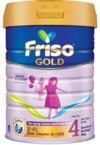A Perfect Stress-Free 100-Day Party
Congratulations! You’ve made it through the first few weeks of parenth.... read more

How do you tell whether your child does, in fact, have poor eating habits? There are many, but here are several signs to watch out for in your child:
It can be baffling when your child suddenly develops the avoidance of food, especially if they used to love mealtimes, but there could also be a variety of reasons why they have poor eating habits. Here are several poor eating habits to look out for:
Depending on the cause of your child’s poor eating habits, there are various solutions that can be employed to improve them. Whatever the cause, the aim should be to break these habits and instead, form good eating habits that encourage your child to eat healthily for his proper growth and development. Here are some solutions to how to get your child to gain weight healthily.
A nutrient-rich diet is important for healthy growth and development. Generally, most vitamin deficiencies can be managed at home with minor changes to diet. You should take your child to see a professional if you are unsure about how to get your kids to gain weight healthily or diet or if you are concerned they may have an allergy to particular foods. The best foods for your child to consume are:
Importance: Fibre is essential for maintaining a healthy digestive system in children. It helps prevent constipation by promoting regular bowel movements and maintaining gut health. Additionally, fibre-rich foods can help children feel full for longer, which can be beneficial for weight management11.
Examples of food rich in fibre: Whole grains (oats, whole wheat bread), fruits (apples, pears, berries), vegetables (broccoli, carrots), legumes (beans, lentils), and nuts/seeds (almonds, chia seeds).
Importance: Proteins are crucial for growth and repair of body tissues, including the cells lining the digestive tract. They also play a role in enzyme production, which aids in the breakdown of food and nutrient absorption12.
Examples: Lean meats (chicken, turkey), fish (salmon, tuna), eggs, dairy products (Greek yoghourt, cottage cheese), legumes (kidney beans, chickpeas), and tofu.
Importance: Consuming fruits that are lower in sugar helps maintain stable blood sugar levels and prevents excessive sugar intake, which can negatively affect digestion and overall health13.
Examples: Berries (strawberries, blueberries, raspberries), citrus fruits (oranges, grapefruits), apples, pears, and kiwi.
Try Friso® Gold Step 3 and Friso® Gold Step 4. Made with milk and processed only once with LocNutri™ Technology to preserve more than 90% of nutrient, Friso® Gold combines the magical goodness of nature with science to bring you easy to digest milk with more than 50 essential6 nutrients to help your child grow stronger from the inside. Friso® Gold now with NOVAS™ Signature Milk with naturally smaller molecules and softer structure, has no added sucrose nor flavour for easy digestion so your child can be stronger inside. It is incredibly important for your child to have good digestion not only for their comfort but to also avoid complications in their future. You may request a sample: Try free 1-day trial pack or 50% off for 6 days-trial pack.
Friso® Gold 3 milk formula helps toddlers to gain weight with Easy to Digest nutrients so they can be strong inside to experience life at its best and fullest with you.
DHA, AA, Omega 3&6 - To fuel learning growth. DHA is important for optimal visual and cognitive development1. AA is recognised for its key role for optimal health, cognition and development2. Omega 3 and 6 fatty acids are important for normal development of the brain, nervous system, sensory organs and intelligence3.
Calcium, Protein, Vitamin & Minerals - Muscle and bone growth. Calcium helps in the normal growth and development of bones and teeth. Protein is essential for your child’s growth, maintenance and repair for the body4. Vitamins and minerals are vital for growth and metabolism5.
GOS, Nucleotides & Bifido Lactis - Helps absorb key nutrients & build strong immune systems. GOS are prebiotics that can help with constipation and more6. Nucleotides can promote healthy gastrointestinal and immunological growth in young children7. Bifido Lactis is important for diarrhoea prevention as well as immune and gut maturation8.
Friso® Gold 4 is made for children above the age of 3 and contains the right choice of nutrition support through its milk powder for your toddler to gain weight healthily which are:
DHA, AA, Omega 3&6 - To fuel learning growth. DHA is important for optimal visual and cognitive development1. AA is recognised for its key role for optimal health, cognition and development2. Omega 3 and 6 fatty acids are important for normal development of the brain, nervous system, sensory organs and intelligence3.
Calcium, Protein, Iron, Copper, Vitamin A and K1 - These nutrients give rapid growth of muscle and bone, as well as healthy vision to prepare the body for study as children of 4 years old begin their preschool education. Calcium helps in the normal growth and development of bones and teeth. Protein is essential for your child’s growth, maintenance and repair for the body4. When copper is combined with iron, it allows the body to build red blood cells as well as maintain healthy bones, blood vessels, nerves, and immune system9. Vitamin A enhances vision and immune functions10. Vitamin K1 helps make other proteins in the body that are important for blood, bone and kidney health and can be found in dark, leafy green vegetables11.
GOS, Nucleotides & Bifido Lactis - Helps absorb key nutrients & build strong immune systems. GOS are prebiotics that can help with constipation and more6. Nucleotides can promote healthy gastrointestinal and immunological growth in young children7. Bifido Lactis is important for diarrhoea prevention as well as immune and gut maturation8.
References


